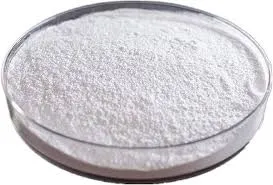
Dec . 21, 2024 13:54 Back to list
Types and Applications of Redispersible Polymer Powders for Construction and Coatings
Understanding Redispersible Polymer Powder Types
Redispersible polymer powders (RDPs) are essential additives widely used in various construction and coating applications. These powders, derived from emulsions, provide numerous benefits, including improved adhesion, flexibility, and water resistance to construction materials such as adhesives, mortars, and renders. Understanding the different types of RDPs can help manufacturers and contractors choose the right product for their specific needs.
Types of Redispersible Polymer Powders
1. Vinyl Acetate Ethylene (VAE) Copolymer Powders VAE RDPs are one of the most common types used in the industry. These powders offer excellent bonding properties and are often favored for their versatility. They provide good flexibility, tensile strength, and water resistance. VAE copolymers are ideal for dry-mix mortars and tile adhesives, making them suitable for both interior and exterior applications.
2. Acrylic Polymer Powders Acrylic-based RDPs are well-known for their outstanding weather resistance and UV stability. They are often utilized in applications requiring superior elasticity, making them ideal for outdoor use. These powders can significantly enhance the performance of exterior wall coatings and renders. Additionally, acrylic RDPs provide excellent scrub resistance, crucial in high-traffic areas.
3. Styrene-Butadiene (SBR) Copolymer Powders SBR RDPs are characterized by their robust adhesion and flexibility properties. They are primarily used in cement-based applications, such as tile adhesives and flooring compounds. SBR powders are particularly effective in enhancing the durability of construction materials exposed to varying weather conditions. However, they may not perform as well in ultra-dry or extreme environments compared to other types.
4. Ethylene Vinyl Acetate (EVA) Copolymer Powders EVA RDPs combine the properties of vinyl and ethylene, resulting in a product that offers excellent flexibility and low-temperature performance. They are often used in specialty adhesives and coatings. The elastic nature of EVA polymers allows for movement within the building materials, making them suitable for applications where thermal expansion is a concern.
5. Polyvinyl Acetate (PVA) Powders PVA RDPs are known for their excellent film-forming capabilities and adhesion properties. These powders are commonly used in situations requiring high levels of bonding strength. PVA is often chosen for applications in the arts and crafts industry, but it also finds a place in construction, particularly in adhesives and sealants.
redispersible polymer powder types

Factors to Consider When Choosing RDPs
When selecting a redispersible polymer powder for a project, several factors must be taken into account
- Application Requirements Different applications demand different properties. For example, a brick adhesion project may require an RDP with strong bonding capabilities and flexibility, while an exterior coating project may necessitate excellent weather resistance.
- Environmental Conditions The exposure conditions, such as humidity, temperature fluctuations, and UV exposure, play a significant role in determining the appropriate type of RDP. Certain polymers are better suited for harsher environments.
- Compatibility It is essential to ensure that the chosen RDP is compatible with the other materials in the formulation. Incompatibility can lead to reduced performance and may compromise the integrity of the final product.
- Cost-Effectiveness While high-performance RDPs may come at a premium price, it is vital to balance performance requirements with budget constraints. Selecting a product that offers the best value for specific needs can lead to long-term savings.
Conclusion
Redispersible polymer powders are invaluable components in the construction and coatings industry, enhancing the performance of various materials. By understanding the different types of RDPs and their specific properties, manufacturers can tailor their products to meet the unique demands of each application, ultimately leading to better quality and longevity in construction projects.
-
Versatile Hpmc Uses in Different Industries
NewsJun.19,2025
-
Redispersible Powder's Role in Enhancing Durability of Construction Products
NewsJun.19,2025
-
Hydroxyethyl Cellulose Applications Driving Green Industrial Processes
NewsJun.19,2025
-
Exploring Different Redispersible Polymer Powder
NewsJun.19,2025
-
Choosing the Right Mortar Bonding Agent
NewsJun.19,2025
-
Applications and Significance of China Hpmc in Modern Industries
NewsJun.19,2025







